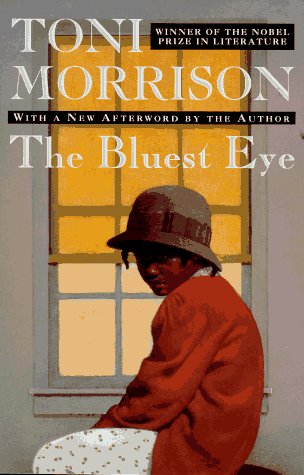

The fight scenes, choreographed by Aaron Preusse, feel fitting in a story where tensions run high and serve their purpose by showing a fraying family.īrittany Bellizeare, who plays Pecola, truly embodies the challenges of being a young African-American girl in 1940s America. The way the characters accentuate their movement is largely reflective of the common stressed mental state. Every action is deliberate and serves a purpose in furthering the story.

The movement of characters, fabricated by Leah Nelson, is powerful and sharp.

During some scenes, water falls from the ceiling and runs down the wall, adding an extra dimension of reality to the performance and accentuating dramatic moments. A trio of dandelions grow up through the largest cracks, serving as symbols of resilience and power and the face of adversary.
#The bluest eye play cracked
The scenic designer, Matt Saunders, attempts to display the space much like Pecola’s reality: cracked and fragile. The play is set to take place on the split sidewalks of Ohio in the 1940s, evident by the fact the stage is covered in what looks like concrete and surrounded by waist-high weeds. The music remains fairly constant throughout the show: it’s never too intrusive as to draw attention away from the action but it keeps the theatre from being silent. The play opens with Pecola drawing on the back wall of the stage to dissonant hums which are the creation of the composer Justin Hicks and sound designer Scott Edwards. Pecola spends most of her time with her friends Claudia and Frieda, a set of sisters who often find themselves trying to cheer Pecola up through actions of well-meaning and reassurance. In it, the playwright bases the action around a preteen girl named Pecola who wishes that her eyes would change to the color blue in order to ensure her beauty in a world that is frightening to her. “The Bluest Eye,” an adaptation of the novel by Toni Morrison, is brought to life by Lydia R. Its impressive use of visuals and profound dialogue is an example of what magic can happen when actors embody the characters they’ve been entrusted to portray. Sometimes plays are so powerful they take a physical toll on the viewer. “The Bluest Eye” is playing April 15 – on the Wurtele Thrust Stage at the Guthrie Theater, Minneapolis. The April 14 performance will offer a special “two-for-one” ticket sale.Fair Use Image: Guthrie Theater (by Dan Norman) For ticket information or to purchase tickets, contact the box office at (804) 828-6026, or visit. “The Bluest Eye,” which opened on April 8, can be seen April 14-16 and 21-23 at 7:30 p.m. Diamond to adapt the novel as a play for young adults in 2005, and Diamond’s play honors Morrison’s distinctively rich language. The Steppenwolf Theatre commissioned Lydia R.

“The Bluest Eye,” which was Morrison’s debut novel, was banned from many schools in the United States. The play explores the legacy of racism not only on Pecola but on her family and community. She longs to see the world through blue eyes. Pecola only plays with a blonde-haired, blue-eyed doll and matches her views of beauty to the doll’s features.
#The bluest eye play skin
“The Bluest Eye,” which is being co-produced with the Barksdale Theatre and directed by April Jones, is the story of Pecola Breedlove, an 11-year-old black girl who struggles to accept the color of her skin in 1940s Ohio. The Theatre VCU spring production of “The Bluest Eye,” the powerful drama adapted from the novel by Nobel Prize-winning author Toni Morrison, is playing through April 24 at the Raymond Hodges Theatre in the Singleton Center for the Performing Arts.


 0 kommentar(er)
0 kommentar(er)
